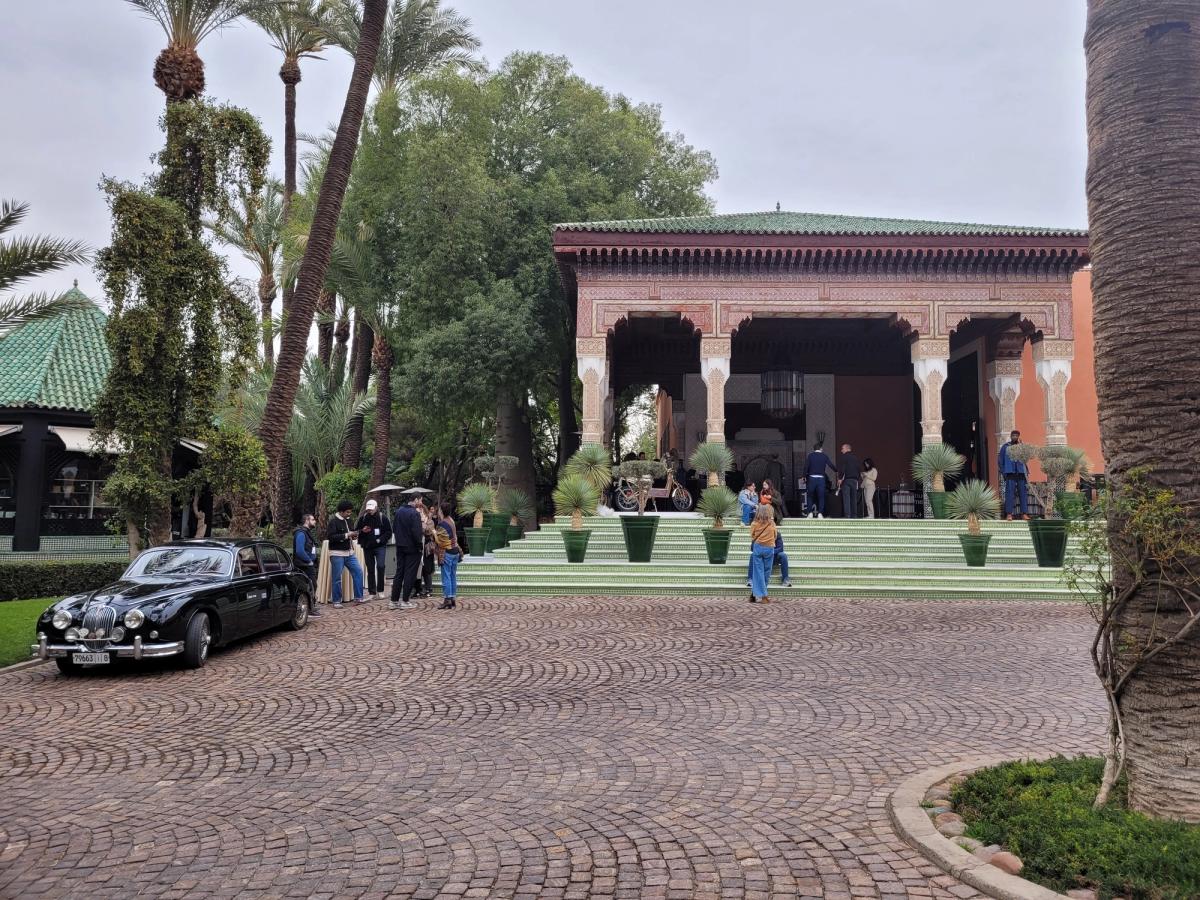After a two-year hiatus, 1-54 Contemporary African Art Fair made its grand return to Marrakech last week. The Moroccan edition is the most intimate of the franchise’s fairs (there are also events in London, Paris and New York), but it is also the most emblematic because it takes place at home, on the African continent.
Launched in 2018 by its founder and director, Touria El Glaoui, Marrakech is the third largest fair after London and New York. Its advantages? "Marrakech is very close to Europe, and visa-free. Its specificity is that it is both French and Arabic speaking, with a larger French-speaking audience than elsewhere," El Glaoui says.
Despite a particularly busy calendar in February this year with, among others, Menart Fair in Brussels just before and, just after, Cape Town Art Fair, the Marrakech event has managed to bring together 20 galleries, the same number as in 2020. With 12 new exhibitors, this fourth edition represents a strong comeback. "Despite the busy schedule, we had a gallery, Superposition, which came from Miami Beach for the first time and wanted to do Marrakech as a priority," El Glaoui says.
The gallery is exhibiting works by Audrey Lyall and Ambrose Rhapsody Murray for $6,500 and $25,000 respectively. Another new exhibitor is Templon Gallery from Paris. It made a spectacular entry at the fair with a monumental work by Kehinde Wiley, displayed at €750,000, as well as a striking painting by Omar Ba, about the ambivalent impact of the press in Africa, priced at €110,000—both higher price levels than usually seen at 1-54 Marrakech.
The gallery sold a work by the French-Algerian artist Abdelkader Benchamma on the opening day "to an African foundation located on an island”, most likely the H Foundation, which is due to open a new location in Madagascar this spring.
The foundation appeared very active at the fair, also purchasing a textile work by Yacinthe Ouattara from 193 Gallery, another new participant. "We have so far concluded nine sales, to Moroccans, English, Americans. A great diversity of collectors!" says César Lévy, the director of the gallery. He adds: “Because of its format, 1-54 Marrakech is ideal for collectors but also for the many advisers who have come and who do not have a thousand works to see.”
Other new entrants include Casablanca-based Galerie 38, which opened a new space in Marrakech's Guéliz district on 9 February with a colourful selection of young abstract artists. It sold several works at the fair, including a textile piece by Abdoulaye Konaté.
In total, only six galleries including four based in Morocco were from Africa this year, compared with 14 in 2020. The temporary import system on the continent—works must be returned to the gallery’s country before being shipped back to the buyer—does not help business.
Another new participant, Foreign Agent, from Lausanne in Switzerland, devoted its stand to the young US artist Nicolas Coleman, whose works depict Moroccan interiors. With prices ranging from €1,000 to €4,200, the stand sold out thanks to strong American interest in advance.
As for regular exhibitors, Nathalie Obadia sold pieces to, among others, "Italians from Paris and a financier living between London and Marrakech”, according to the Parisian gallery owner. “We didn't stop working. We only sold to people we did not know, and we saw the others.” Prices on the booth ranged from €7,000 for works by Seydou Keita to €40,000 for those by Youssef Nabil.
Another familiar name at the fair, Magnin-A, devoted its stand to the Angolan artist Ana Silva, whose textile works explore child labor (prices range from €8,000 to €18,000), while gallery Cécile Fakhoury, located in Paris, the Ivory Coast and Senegal, sold half of its stand. “It wasn’t the easiest,” says gallery director Francis Coraboeuf. Vanessa Branson, sister of Richard Branson, came with a list of artists to see and was again very involved, buying works from at least seven or eight galleries.


